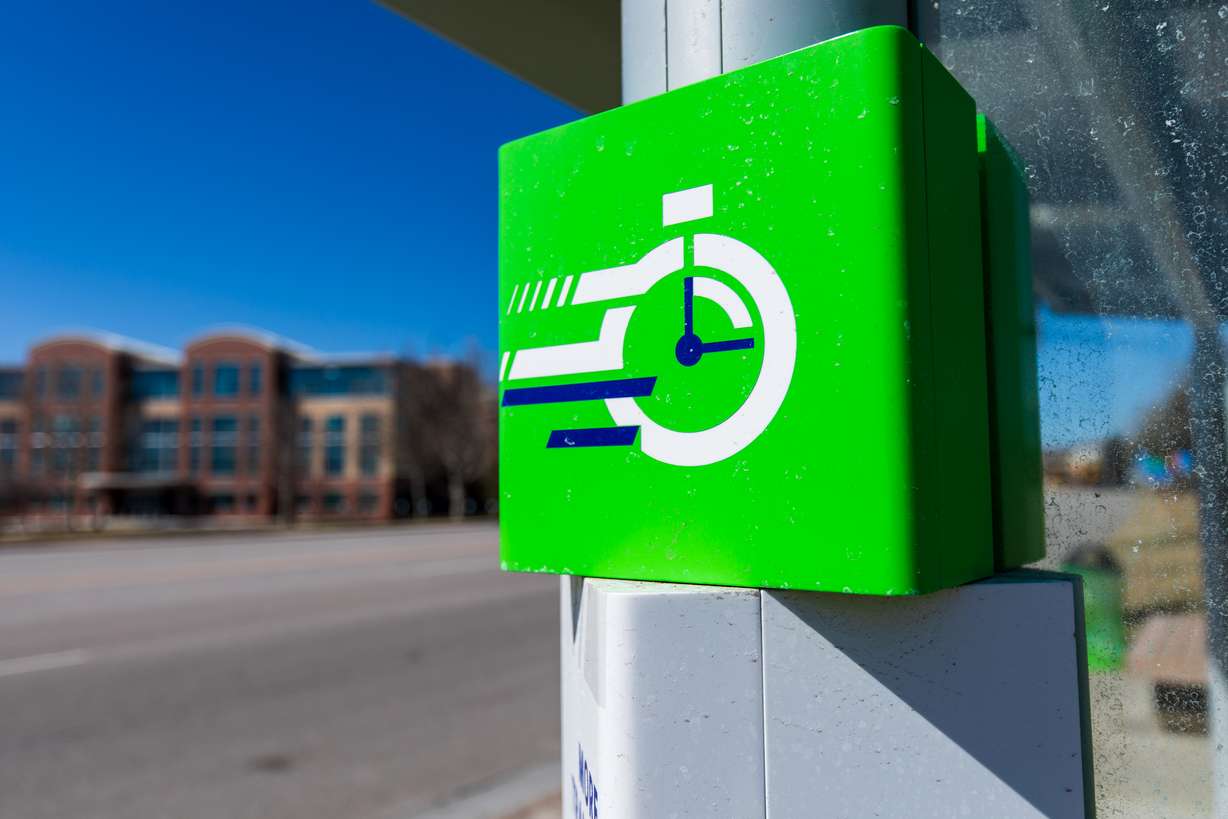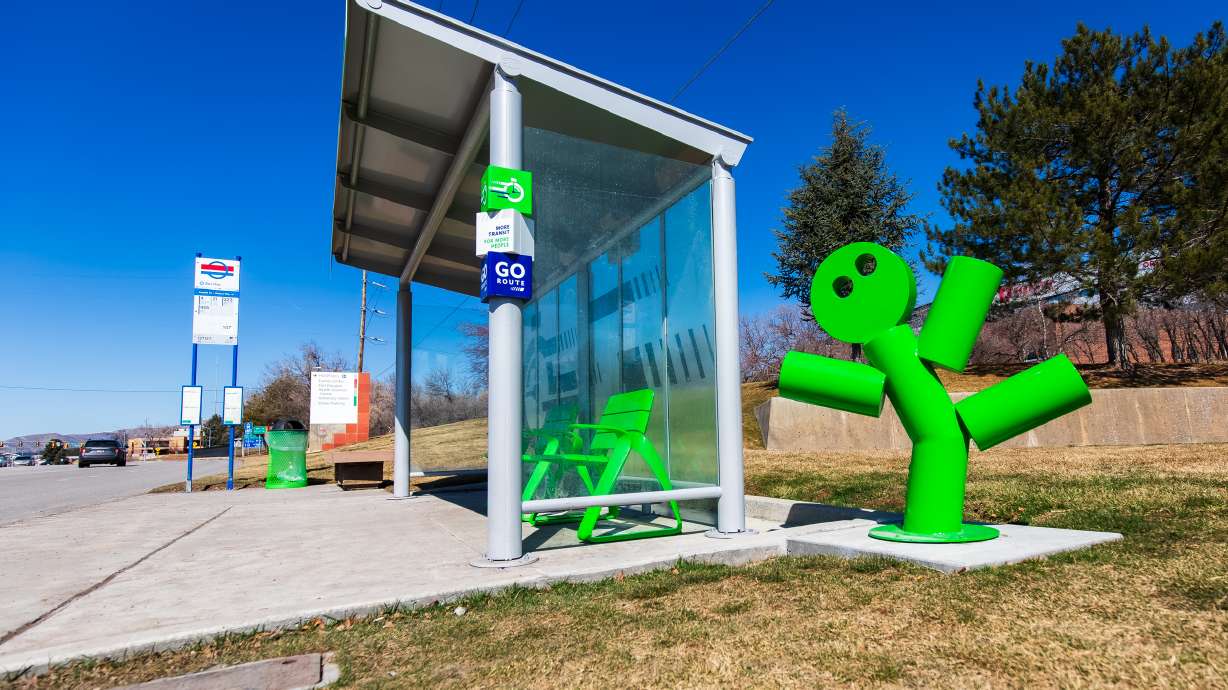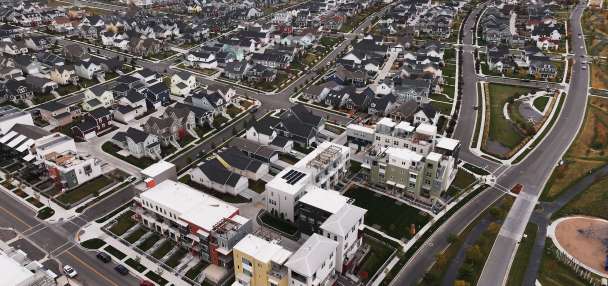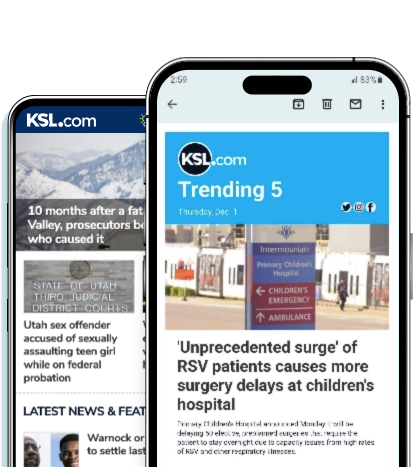Estimated read time: 3-4 minutes
- Salt Lake City and Utah Transit Authority are partnering on "Go Route" bus stops.
- The new brand is part of a $6.3 million annual funding agreement between Salt Lake City and UTA over increased freqency.
- More routes could receive 15-minute service over the next few years.
SALT LAKE CITY — With bright green benches, trash cans and sculpture, a pair of stops near the University of Utah campus aren't gearing up for St. Patrick's Day.
Rather, these recently rebranded stops along Foothill Drive by Wakara Way offer a glimpse of what the future of transit stops could look like — at least along routes with frequent service.
These are Salt Lake City's first two "Go Route" stops, a new way Utah Transit Authority is looking to brand bus routes that offer 15-minute service or less. They're the next step in $6.3 million annual funding between Salt Lake City and UTA over four key routes in the city, including Route 21 which uses these two stops.
"One of the greatest factors in people choosing to ride public transit is frequent service. With service every 15 minutes or better during peak times, you don't have to worry about checking schedules or planning ahead; you can just show up and go," UTA Director Jay Fox said in a statement Tuesday.
Salt Lake City reached an agreement with UTA on increased bus service in 2017, which was then funded as part of a 0.5% sales tax increase that the Salt Lake City Council approved in 2018. The tax aimed to pay for road projects, affordable housing construction, public safety, as well as expanding transit opportunities.
Salt Lake City Mayor Erin Mendenhall, who was a member of the City Council at the time, explained Tuesday that the city wanted to move people "without the stress of traffic or parking," which is why it chose to invest more in transit.
A year later, the two sides partnered on a plan to increase service on Routes 2, 9 and 21, ensuring there is at least 15-minute service at key times of the day for three of the top east-west routes in the city. Route 1 has since been added to the fold, while UTA also increased Route 2 service to every 7 minutes during peak weekday hours.
UTA said routes with "enhance service" drew 6.1 million riders in 2024, up about 32% in two years.
These are now part of the "Go Route" brand. Jon Larsen, Salt Lake City's transportation director, said the brand aims to make route frequency more obvious to potential riders, so they don't have to look up schedules to know when the next bus is coming.

UTA has long used green to indicate 15-minute routes at its stops, which is why those two stops along Foothill Drive are so obviously green. Larsen told KSL.com the city plans to transform all stops along Routes 1, 2, 9 and 21 to look similar — or at least add elements of the design, like the brand's fast-moving stopwatch logo.
Both sides just want to get the point across about frequency, since it is a major factor in ridership.
"It just means that you know it's at least 15-minute frequency all day, every day — even (Saturday) service," he said. "They're the routes that you can rely on to get not just to work but to meet your lifestyle for all of your trips. ... We're trying to make it more easily accessible to anyone with any interest in riding transit."
There's no timeline for all the stops to be branded, but Larsen said it will likely be rolled out over the next few years.
Routes 33, 35, 200 and 217 in Salt Lake County also fall under UTA's "Go Route" brands, although not through partnerships with Salt Lake City. The same goes for all three TRAX light-rail lines UTA operates.
Other routes could be added to the brand in the future. Fifteen-minute service is being explored for Routes 4 and 205, which currently connect Salt Lake City's west side to Millcreek's Olympus Cove and Murray Central Station, respectively. Larsen added Route 4 could also be extended closer to the mouth of Big Cottonwood Canyon sometime in the future.









